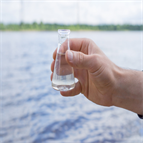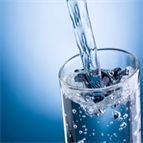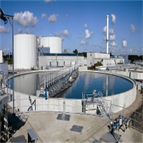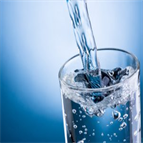Find methods for your needs
Refine by Feature
Displaying 1-5 of 7 results for Tag: Environmental analysis
Trace analysis of pharmaceuticals and organic contaminants in water
Instrument Type: LCMSMSWe present the reliable and accurate quantitative analysis of contaminants at the pg/mL level in drinking water using the Thermo Scientific EQuan MAX Plus LC-MS system coupled to the Thermo Scientific TSQ Endura triple quadrupole mass spectrometer. Excellent reproducibility was shown for the target compounds in tap water using 1 mL injections at 0.37× maximum effluent concentration.
EPA Method 557 - Analysis of Haloacetic Acids, Dalapon, and Bromate in Drinking Water by IC-MS/MS
Instrument Type: ICMSHaloacetic acids (HAAs) are formed as disinfection byproducts when water is chlorinated to kill bacteria. Chlorine reacts with naturally occurring organic and inorganic matter in the water, such as decaying vegetation, to produce disinfection by-products (DBPs) that include HAAs. Of the nine species of HAAs, five are currently regulated by the U.S. Environmental Protection Agency (EPA). We demonstrate a simple and sensitive IC-MS/MS method for analyzing haloacetic acids, the pesticide dalapon, and bromate in water using EPA Method 557.
Quantitative and Semi-Quantitative Determination of PPCPs and Their By-Products in Wastewater by Orbitrap MS
Instrument Type: LCMSPharmaceuticals and personal care products (PPCPs) and endocrine disrupting chemicals (EDCs) detected in surface and drinking waters, as well as in treated wastewater. They are an issue of increasing international attention due to potential environmental impacts. We developed an analytical method capable of determining PPCPs and their by-products in wastewater treatment plant (WWTP) samples. This workflow was applied in a survey of 35 permeate samples obtained from a pilot anaerobic membrane bioreactor (AnMBR).
EPA Method 543 - Quantitation of Organic Pesticides in Drinking Water Using Online Pre-concentration/Solid Phase Extraction and Tandem Mass Spectrometry
Instrument Type: LCMSMSTraditionally, United States Environmental Protection Agency (EPA) methods for drinking water analysis have required offline SPE to concentrate analytes to a level that can be detected using LC-MS instrumentation. This process requires the collection of large volumes of sample, typically between 250 and 1000 mL. We developed a method to assist in the validation of a new EPA method for the analysis of organic pesticides in drinking water. This method utilizes 1~2 mL injections for online preconcentration and eliminates offline solid phase extraction (SPE).
Simultaneous Determination of Oil Dispersants in Seawater and Crude Oil by LC and Tandem MS
Instrument Type: LCMSMSOn April 20, 2010 the Deepwater Horizon (MC-252) oil platform caught fire and sank in the Gulf of Mexico, creating a large release of oil and gas from the riser pipe and uncapped well head. Containment efforts included heavy use of oil dispersants Corexit EC9500A and Corexit EC9527A which were approved for use in the Gulf of Mexico oil spill by the U.S. EPA. Tracking Corexit in the environment is a priority due to its low-to-moderate toxicity. We describe an analytical method capable of detecting its presence in seawater even when large dilution factors are expected.





